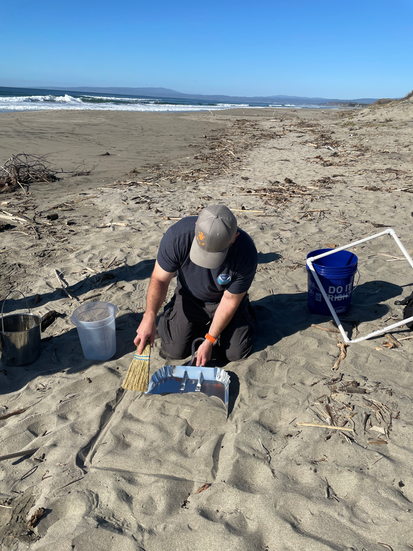Microplastics: What, Where and Is it Harmful?
- Pam Krone

- Jan 18, 2024
- 2 min read
Plastic is not just one compound, but includes many different synthetic chemistries. What plastics have in common is plasticity, allowing them to be molded, extruded, or pressed into many different shapes with many different characteristics that are beneficial for particular uses.

For example, consider the benefits of the pliability of a plastic bag made from polyethylene, the hardness of a car bumper made of polycarbonate, and the strength of rope made from nylon. Each may pose both common and different risks for marine life. All plastics are extremely durable and resilient to decomposition, such that rather than breaking down, they instead break apart into smaller and smaller pieces.

When these pieces are smaller than 5 millimeters, they are considered microplastics. Smaller yet are nanoplastics, less than 1 micron in size. The larger size particles, bigger than microplastics, are sometimes called macroplastics. At each stage of the breakdown process, plastics pose a different threat to marine life.
Large plastics can cause entanglement of marine life, such as entanglement in nets, fishing line or even six-pack holders. The large microplastic particles can be eaten by birds, fish, and other marine life, causing malnutrition, gut blockages or in some cases, toxicosis. Microplastics are also a health threat to marine life. They are ingested by plankton at the base of the food web and from their work their way up into larger organisms.
Baleen whales feed on plankton, consuming large volumes of microplastics as they do so. We don’t know yet how these microplastics may traverse the whale’s body, or whether they get into the blood stream, cause damage to the lungs or result in reproductive harm from the carcinogens in plasticizers. However, we do know that the sharp edges of microplastics can damage sensitive membranes in the digestive systems of birds, mussels and crabs. Microplastic particles can damage the gills of fish or lead to neurotoxicity and growth retardation in some marine life.

Some scientists are questioning how microplastics might affect light penetration in the ocean and how this could influence plankton growth, perhaps resulting in less food at the base of the food web. Human health is also at risk from microplastics.
The California Marine Sanctuary Foundation has recently been awarded a grant titled, “From watershed to whales: Tracking the source and transport of microplastics in the greater Monterey Bay region to inform risk assessments.” We are assessing the quantity of size classes of microplastics in different environments, so that we can better understand the various risks of these different size classes to marine life and human health.
We will be monitoring and analyzing microplastic samples from rivers, beach sand, the ocean, and fish. We will analyze some of the particles for their chemical footprint so we can assess the type of plastics in these environments. In addition, we will be collecting microplastic traveling down rivers to better quantify the amount of plastic that enters the ocean from regional land-based sources.
We hope this understanding can help us direct future efforts to reduce or eliminate the transport of plastic to the marine environment, however this endeavor will require the commitment of many entities working together: governments, industry, NGOs, and all plastic users, including you and me.








Comments